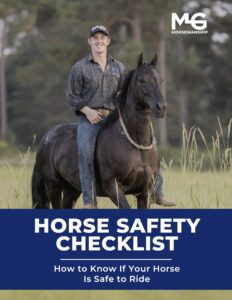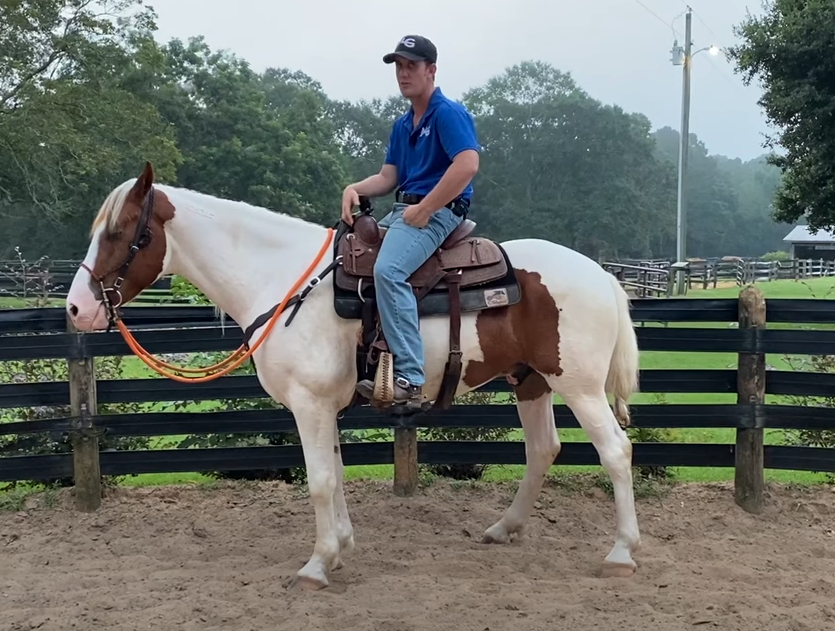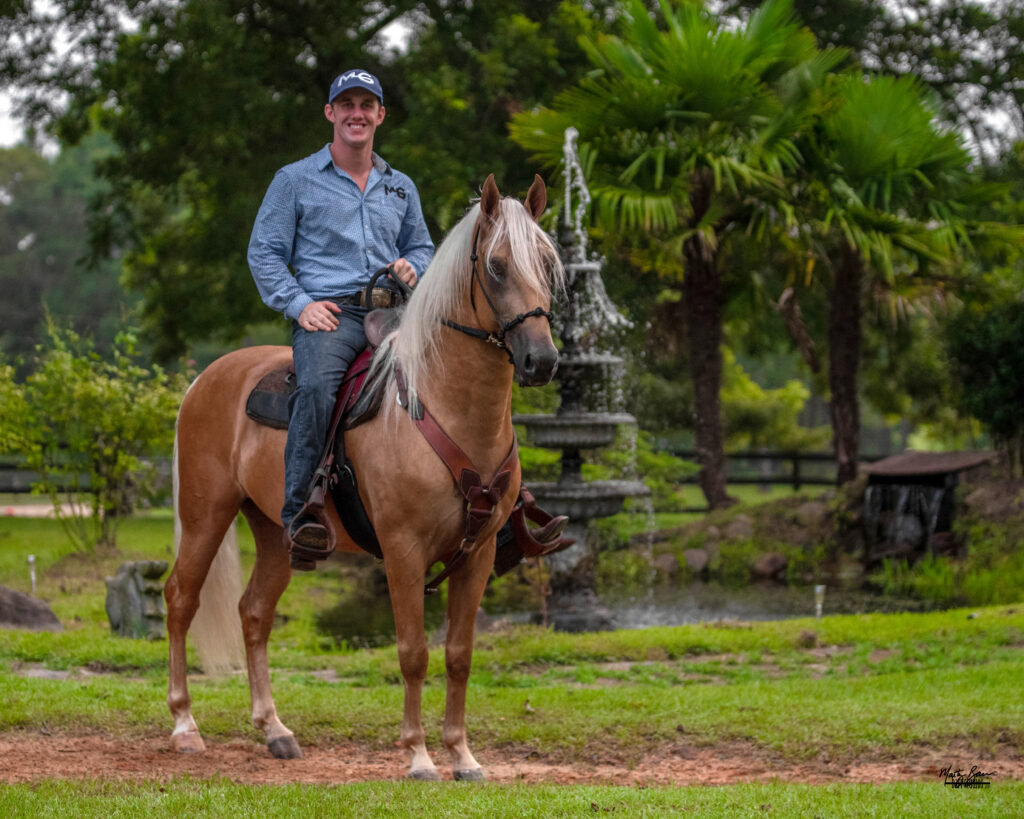Learn why, when and how to use spurs while riding your horse!
Watch the Video Here or continue reading below!
Exploring the Essential Role of Spurs in Horsemanship
Hey there, horse enthusiasts! It’s Michael Gascon, The Horse Guru, and I’m thrilled to bring you a highly requested video guide on a topic that’s often surrounded by curiosity and questions: How, when, and why should you use spurs in your horsemanship journey? Today we will delve into the intricacies of spurs and how they can become a powerful tool in your arsenal for refining communication with your equine companion. Join me as we uncover the art of using spurs effectively, step by step.
Ground Rules: Spurs As Precision Instruments, Not For Forward Impulsion
Before we dive into the nitty-gritty of spurs, let’s establish a crucial foundation. Personally, I refrain from using spurs for forward impulsion. It’s counterintuitive to squeeze the middle of a horse to make them go faster. Instead, I opt for tools like the dressage whip or crop, which allow me to apply pressure strategically from behind, encouraging forward movement.
Discovering The Pinnacle Of Spurs In Dressage And Reining
Ever noticed how dressage and reining trainers often have spurs at the ready? That’s because these sports demand pinpoint precision without overt cues. The finished horses in these disciplines showcase the true potential of spurs as instruments for refined communication.
Spurs: The Final Flourish in Bridleless Work
Meet my equine companion, Fanny, the son of Tito. Our journey together has been about honing him into the best bridleless horse he can be. To achieve this, I’ve prioritized leg communication over rein reliance. The choice of spurs is crucial; for me, a one-inch spur provides just the right touch without overwhelming the horse. Watch closely as I demonstrate how to communicate with Fanny using minimal cues. It’s about finding the balance, keeping your lower leg calm and quiet, and maintaining a forward-focused toe position. With this approach, you can achieve advanced maneuvers with ease.
If you’re starting with spurs, remember, it’s a process. Begin by reinforcing the importance of leg and rein communication. By the time you introduce spurs, your horse should already be attuned to your cues. The goal is to create a seamless transition from reins to spurs.
Guiding Movements with Finesse
Horses instinctively move away from pressure and towards a void. As trainers, this is invaluable knowledge. By strategically applying and removing pressure, we can effortlessly guide our equine partners. Understanding these principles sets the stage for effective communication through spurs.
First and foremost, it’s imperative that the horse pays attention to the rider’s legs. The reins and seat play a crucial role as well. As we introduce spurs into the equation, it’s important to note their size. A small, one-inch spur is preferred for its precision. Longer spurs limit the movement of the foot, which is counterproductive for effective communication with the horse.
MASTERING SUBTLE COMMUNICATION
Understanding the natural instincts of horses is crucial. They tend to move away from pressure and towards open spaces. This knowledge is especially important when working with younger horses. As we progress in training, the focus shifts towards maintaining consistent rein contact. Both legs should rest comfortably against the horse’s sides.
The goal here is to establish a seamless flow of cues. As the rider tightens their thigh and calf, keeping the toe pointed up, the lower leg comes into play. When the toe is pointed down, the spur makes contact with the horse, sending a clear message. This level of subtlety ensures that the horse is responsive without the need for excessive use of the spurs. As the left stirrup comes off, the horse senses the change and moves in the corresponding direction. This responsiveness can be further refined. Opening the left leg guides the horse left, while closing it encourages a straight path. This refined communication allows for a seamless interaction between rider and horse.
Communicate Through Your Legs Not The Reins
Interestingly, even in neck-reined horses, the hand remains steady. The primary mode of communication is through the legs, not the reins. This approach fosters a deeper understanding and trust between rider and horse.
Spurs can also be used to encourage specific behaviors. For instance, if we want the horse to lower its head, we can gently apply pressure and guide the horse in the desired direction. This level of control is especially valuable in preparation for shows, where precision and elegance are paramount.
In Conclusion oF USING SPURS
Using spurs in horse training is an art that requires finesse and understanding. By paying attention to the horse’s natural instincts and employing subtle cues, riders can establish a powerful line of communication. With the right techniques, spurs become a valuable tool in refining a horse’s performance and responsiveness. Remember, it’s not about force, but about finesse and respect for the horse’s cues.
Thank you for joining me on this exploration of spurs. Stay tuned for more insights in my next video. Until then, happy riding!
Check out more free training resources HERE!
HOW SAFE IS YOUR HORSE?
Can you control every part of his body, even if he’s scared or unsure?
There are some specific things that I believe every horse should be able to do before they are considered completely safe to ride. So that you can see how safe your horse is to ride, I’ve created this FREE Horse Safety Checklist.





